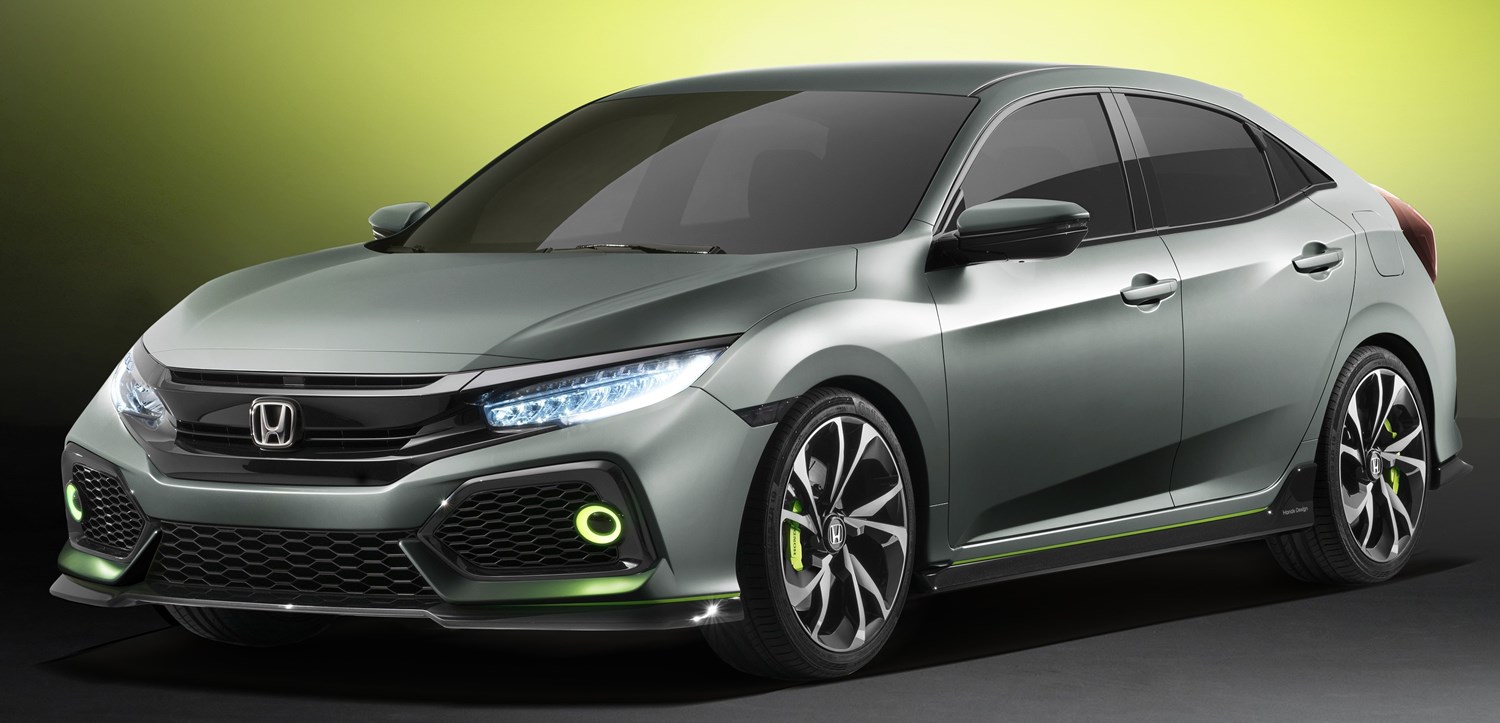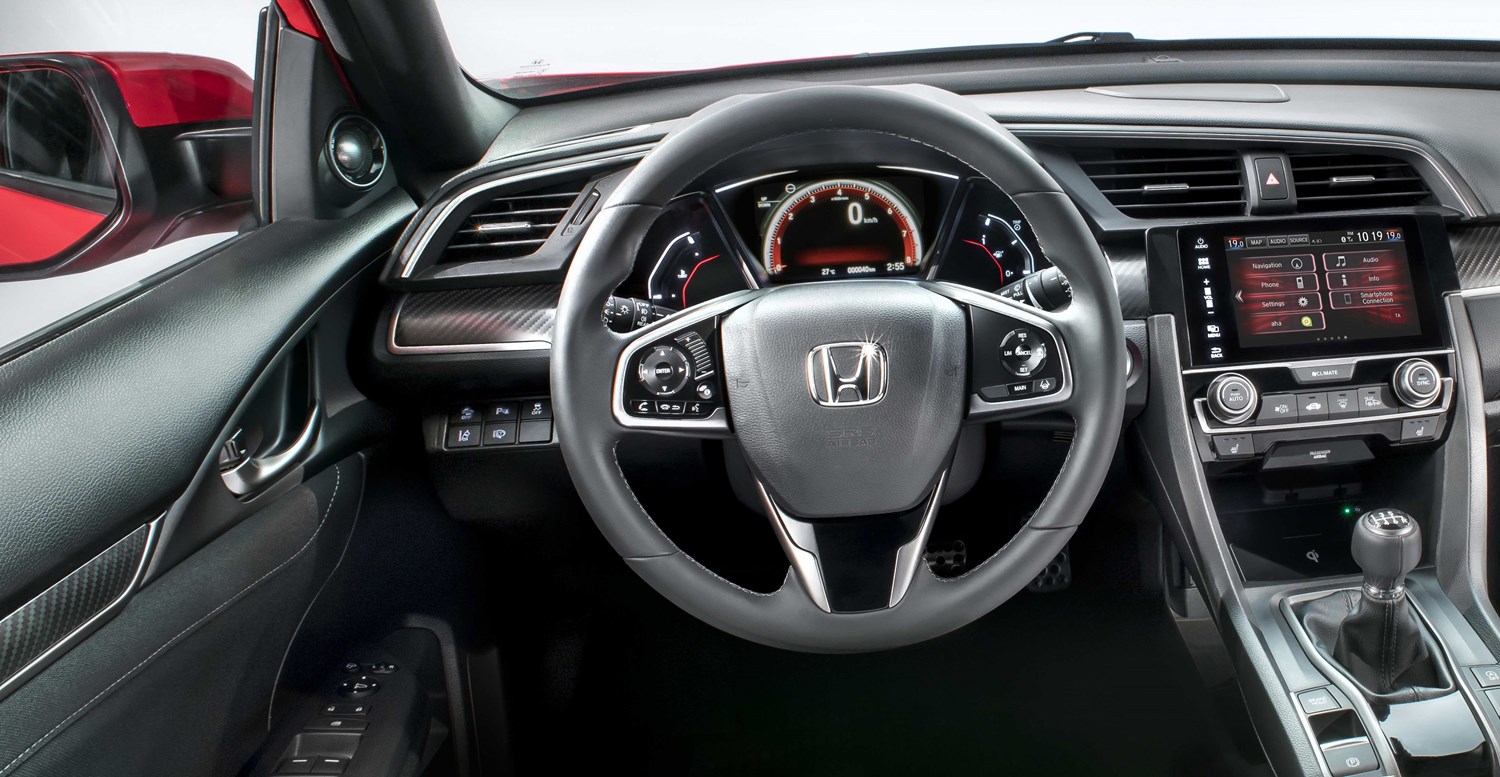Latest model
The latest model was launched in 2017, bringing with it a huge amount of standard equipment and technology. Many cars now come with features such as lane keep assist, lane departure warning, traffic sign recognition and a collision mitigation braking system. All of these systems work together to ensure that the new Civic is as safe as possible.
However, the biggest changes to the Civic were mechanical. An all-new suspension system has been fitted, allowing the car to remain composed at any speed, as well as being well-suited to the unsettled surfaces found on UK roads. Higher-specification cars also get adaptive dampers, giving you the option of changing the car’s ride to your preference.
The distance between the front and rear wheels has also been increased, giving better interior space. It’s a change that you may not notice from the outside, but one which makes a huge difference on the inside.
Engine choices remain limited for now, with either a 1.0-litre or 1.5-litre petrol on offer. There is a diesel on the cards, though that has yet to arrive. Enthusiasts will also be pleased to see the arrival of the Type R, which will be released in the UK in the later part of 2017.
Value for money
The Honda Civic offers very good value for money. Even base SE-trim cars get Bluetooth, steering wheel-mounted audio controls, as well as front and rear parking sensors. Higher-spec cars get a full infotainment system, a rear parking camera and automatic climate control.
However, as the latest model has only just been released, you won’t find any used examples on the market, so if you want to get your hands on one you’ll have to go straight to the dealer.
That said, the previous-generation Civic remains an excellent buy – especially used versions. Though criticised for its overly harsh ride, the ninth-generation Civic offered plenty of interior space in a usable hatchback layout.
You’ll look to pay around £15,000 for a 2016 Civic, fitted with a diesel engine and featuring around 10,000 miles on the clock. However, go for an older (but no less practical) 2012 model and this will halve the price – though expect to find more miles with it.
There is, of course, the Civic Type R. As mentioned, the new version isn’t due to arrive in the UK until late 2017, but the previous-generation hot-hatch remains one of the best in its segment.
A 2016 Type R will cost around £30,000, though earlier models – which are still a huge amount of fun to drive – sit at anywhere from £2,500 and up.
Looks and image
The Civic has always had a quirky design style, with even the very first generation coming with a boxy, utilitarian design that stood out. The new car has a far more saloon-like appearance than the car it replaces, though it still retains many angular lines.
The previous-generation car featured neat styling touches like rocket-shaped door handles and triangular exhaust surrounds.
The interior is designed in a similar way, with a gear lever mounted far higher than you’d traditionally expect in a hatchback. Type R cars also get large bucket seats that offer a huge amount of support.
Inside, the new Civic has really stepped up its game. Higher-spec cars get a large infotainment screen, while the gearstick has now moved back down to a more traditional position.
It’s similar to the previous car’s cabin, there’s no doubt about that, but the vast majority of materials are significantly upgraded. There are a few cheaper plastics used lower down in the cabin, but for the most part it’s a comfortable and well-made place to be.


